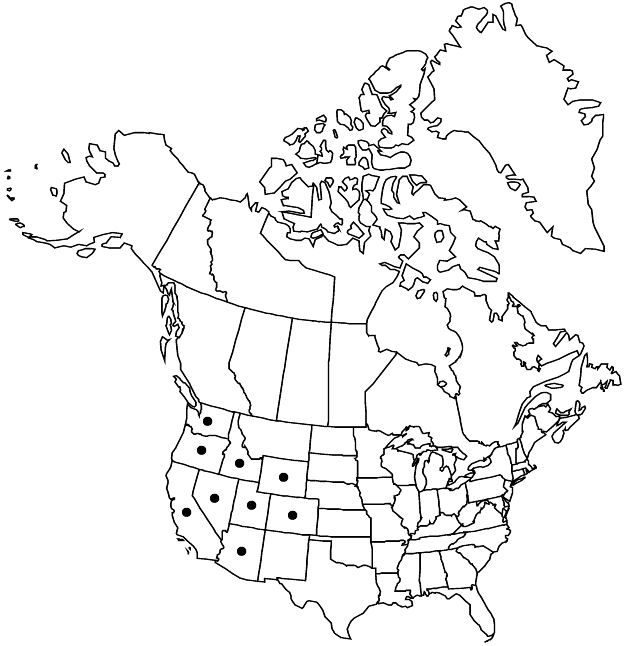Difference between revisions of "Cercocarpus ledifolius var. intermontanus"
Brittonia 39: 424, figs. 1A – D. 1987.
FNA>Volume Importer |
FNA>Volume Importer |
(No difference)
| |
Revision as of 23:12, 16 December 2019
Shrubs or trees, 20–70(–85) dm. Stems: long-shoot internodes 13–22 mm, sparsely sericeous-villous; short shoots 2–55 × 1.8–3.4 mm. Leaves: petiole (1.5–)2.5–6 mm; blade lanceolate to lance-elliptic or (when shorter) elliptic-ovate, (10–)16–30(–40) × (2.8–)5–9(–11) mm, margins revolute (leaving much of abaxial surface exposed), abaxial surface sericeous or closely villous (hairs not obscuring surface), glabrescent, adaxial sericeous or sparsely villous or hairs tightly coiled and/or 1/2 coiled, glabrescent. Flowers 4–10 per short shoot; hypanthial tubes strongly sericeous or villous; sepals 2–2.5 mm. Achenes 6.5–10.5 × 1.3–1.5 mm; fruit awns 5–7(–8.5) cm, proximal setae 2.2–3.5 mm.
Phenology: Flowering May–Jun.
Habitat: Rocky dry, often south- to west-facing slopes, canyons, with Artemisia tridentata, Purshia tridentata, Gambel oak, maple, juniper, pinyon, ponderosa pine, lodgepole pine, Douglas fir and white fir, subalpine zones, often forming pure stands
Elevation: (500–)1300–3300 m
Distribution

Ariz., Calif., Colo., Idaho, Nev., Oreg., Utah, Wash., Wyo., Mexico (Baja California).
Discussion
Variety intermontanus is sympatric with var. ledifolius in southern Idaho, southwestern to eastern Oregon, southeastern Washington, and western Wyoming, and with var. intricatus in northeastern Arizona, eastern California, Nevada, and Utah.
Leaves in individual specimens of var. intermontanus vary in size, with long-shoot leaves largest and the first-formed short-shoot leaves of a season more oblong-ovate and often smaller. Heartwood is hard, very dark, and valued for specialty items. Variety intermontanus has long been known as Cercocarpus ledifolius, or var. ledifolius; its type specimen is convarietal with types of var. intercedens.
Selected References
None.